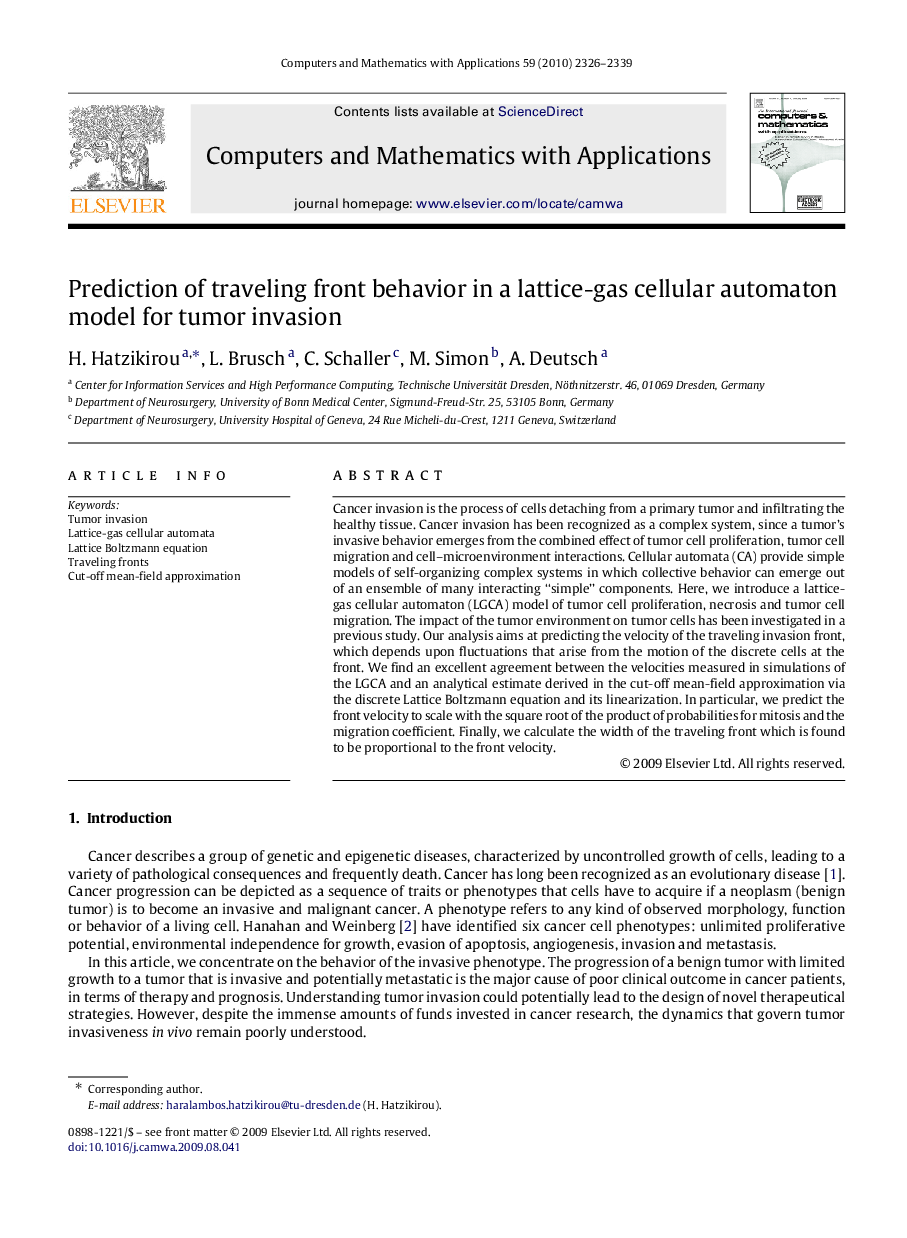| Article ID | Journal | Published Year | Pages | File Type |
|---|---|---|---|---|
| 473962 | Computers & Mathematics with Applications | 2010 | 14 Pages |
Cancer invasion is the process of cells detaching from a primary tumor and infiltrating the healthy tissue. Cancer invasion has been recognized as a complex system, since a tumor’s invasive behavior emerges from the combined effect of tumor cell proliferation, tumor cell migration and cell–microenvironment interactions. Cellular automata (CA) provide simple models of self-organizing complex systems in which collective behavior can emerge out of an ensemble of many interacting “simple” components. Here, we introduce a lattice-gas cellular automaton (LGCA) model of tumor cell proliferation, necrosis and tumor cell migration. The impact of the tumor environment on tumor cells has been investigated in a previous study. Our analysis aims at predicting the velocity of the traveling invasion front, which depends upon fluctuations that arise from the motion of the discrete cells at the front. We find an excellent agreement between the velocities measured in simulations of the LGCA and an analytical estimate derived in the cut-off mean-field approximation via the discrete Lattice Boltzmann equation and its linearization. In particular, we predict the front velocity to scale with the square root of the product of probabilities for mitosis and the migration coefficient. Finally, we calculate the width of the traveling front which is found to be proportional to the front velocity.
